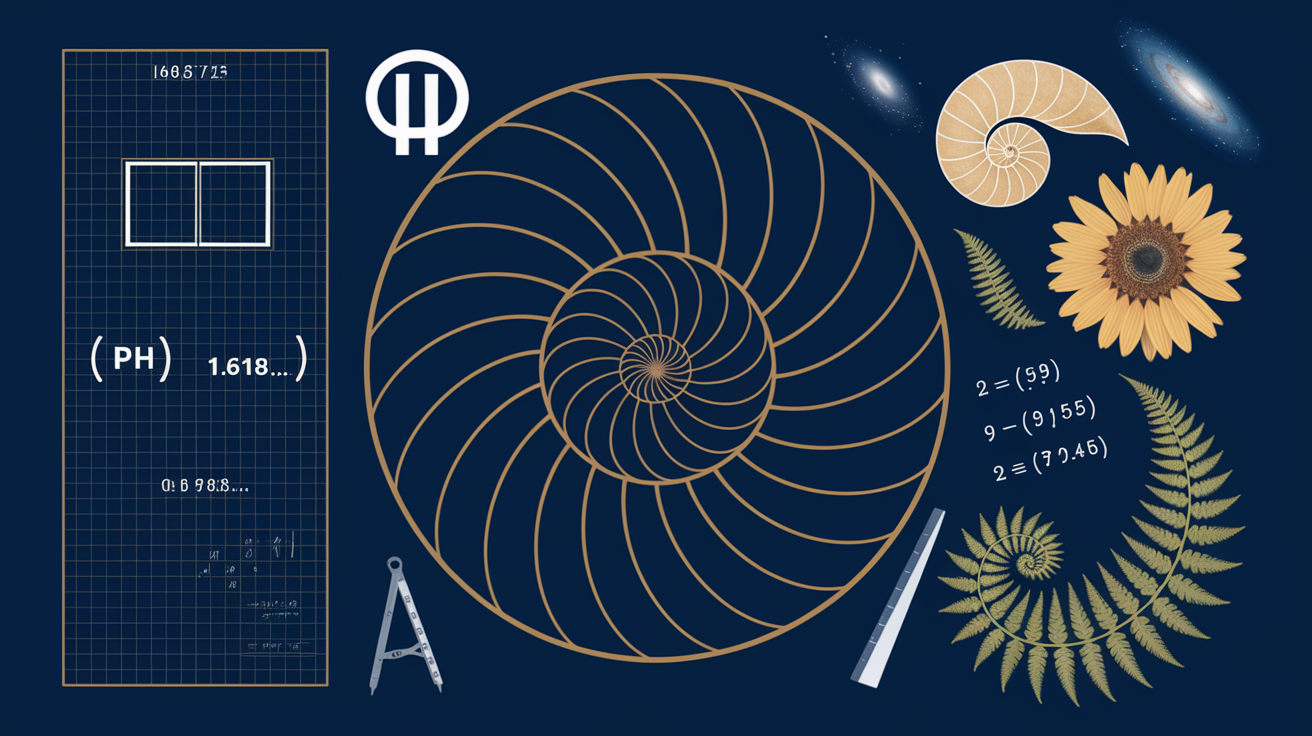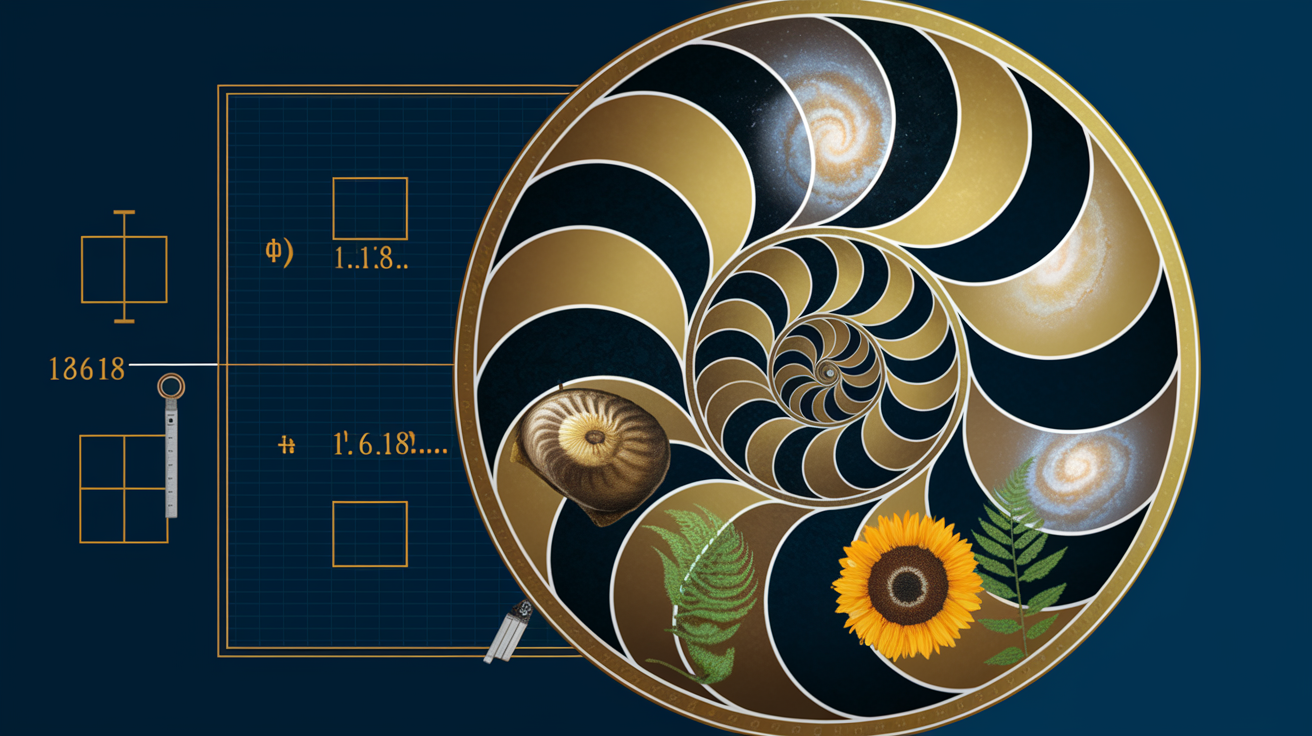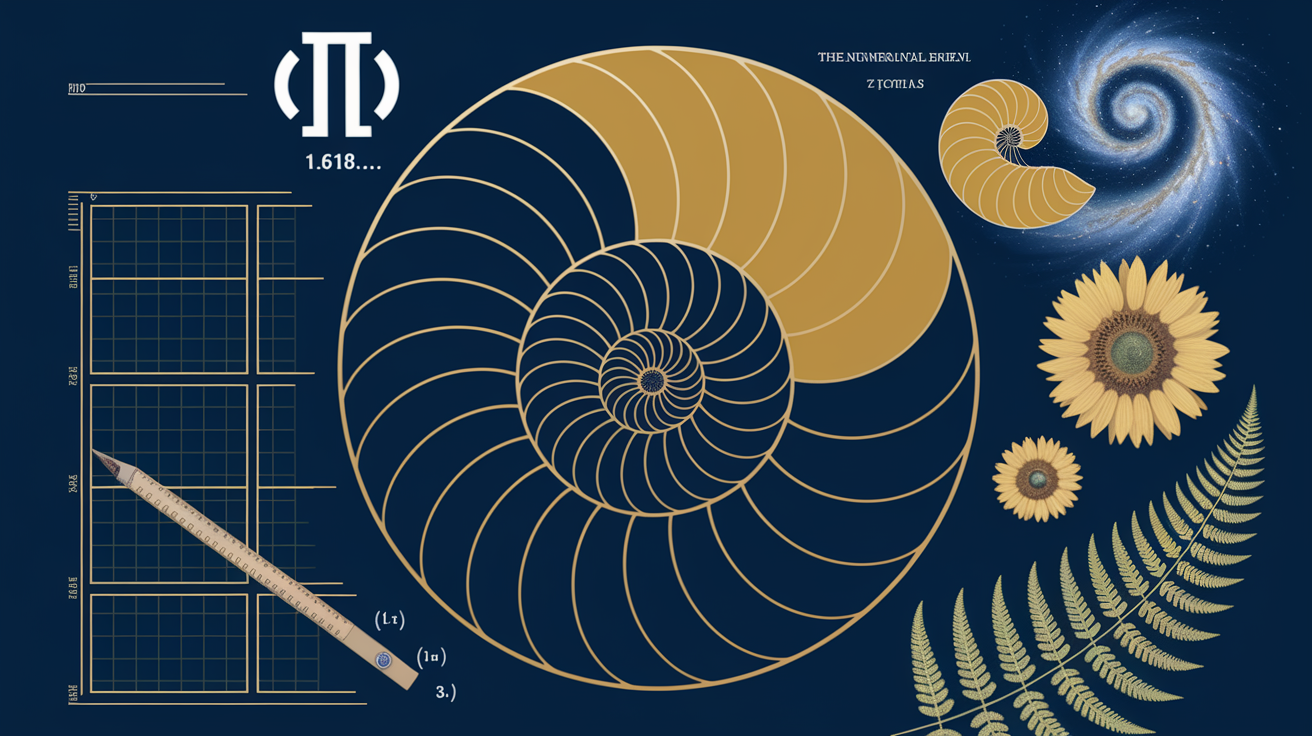Title: Golden Spiral
Author: Alloya Huckfield
Description: The Golden Ratio
tags:
- golden
- Vibration
- Spiritual
icon: LiAsteriskgolden-spiral
The Golden Ratio (φ ≈ 1.618033988749895) has several remarkable mathematical properties that extend beyond its basic definition. When we examine its algebraic representation, we find that φ is the positive solution to the quadratic equation:
This gives us:
This number is irrational, meaning it cannot be expressed as a simple fraction. Its decimal expansion continues infinitely without repeating.
The Golden Ratio also has a unique property where:
This recursive relationship shows how the Golden Ratio contains itself within its own definition, creating a mathematical self-similarity that parallels the self-similarity we see in the Golden Spiral.

The construction of the Golden Spiral can be approached through several mathematical methods:
1. Fibonacci Approximation: We can approximate the Golden Spiral using quarter-circles within squares whose sides follow the Fibonacci sequence. As we connect these quarter-circles, we form a spiral that increasingly resembles the true Golden Spiral as we use larger Fibonacci numbers.
-
Polar Equation: The exact equation for the Golden Spiral in polar form is:
Where
-
Parametric Equations: We can also express the Golden Spiral parametrically as:
These mathematical representations allow us to generate precise Golden Spirals for applications in design, science, and engineering.
Golden Spiral in Advanced Natural Systems
The presence of the Golden Spiral in nature extends beyond the commonly cited examples:
- Galactic Structure: Spiral galaxies often form arms that approximate logarithmic spirals with ratios close to the Golden Ratio.
2. DNA Molecule: The DNA double helix has dimensions that relate to the Golden Ratio—the height of a full turn compared to the width follows proportions related to φ.
- Human Body: The spiral arrangement of hair growth patterns on the human scalp often follows a Golden Spiral pattern.
- Crystal Growth: Certain crystal formations develop according to logarithmic spiral patterns that approximate the Golden Spiral.
- Fluid Dynamics: Vortex formations in fluids frequently develop according to logarithmic spiral patterns that relate to the Golden Ratio.
What makes these occurrences mathematically significant is that they represent systems where growth occurs proportionally to size. This proportional growth is precisely what the Golden Spiral mathematically represents.

The Golden Spiral connects to several advanced mathematical concepts:
-
Continued Fractions: The Golden Ratio has the simplest non-trivial continued fraction expansion:
-
Pentagonal Geometry: In a regular pentagon, the ratio of the diagonal length to the side length is exactly the Golden Ratio.
-
Hyperbolic Functions: The Golden Ratio can be expressed using hyperbolic functions:
-
Klein's Absolute Invariant: In the theory of modular forms, the Golden Ratio appears as a value of Klein's absolute invariant j.
-
Fibonacci Sequence: The sequence 1, 1, 2, 3, 5, 8, 13... where each number is the sum of the two preceding ones, has a direct relationship to the Golden Ratio. The ratio of consecutive Fibonacci numbers (F₍ₙ₊₁₎/Fₙ) approaches φ as n increases.
Artists and designers have developed sophisticated techniques for incorporating the Golden Spiral:
- Dynamic Symmetry: A design principle that uses the Golden Ratio to create harmonious divisions of space in compositions.
- Typography: Font designers use the Golden Ratio to determine optimal letter proportions, spacing, and line heights.
3. Musical Composition: Some composers structure their pieces around the Golden Ratio, placing key transitions and climaxes at points determined by φ.
- Film Editing: Filmmakers sometimes place important scene transitions at points in the timeline based on the Golden Ratio.
- Product Design: From the dimensions of credit cards to smartphones, the Golden Ratio influences the proportions of many everyday objects.

Research in cognitive psychology has explored why humans might prefer Golden Ratio proportions:
Visual Processing Efficiency: Studies suggest that visual shapes with Golden Ratio proportions might be processed more efficiently by the human visual cortex.
Our visual system evolved in environments filled with fractal-like patterns, potentially making us more receptive to the self-similar properties of the Golden Spiral.
. Perceptual Balance: The Golden Ratio creates a balance between symmetry and asymmetry that appears to be perceptually optimal for many people.
The Golden Ratio has found applications in modern computing:
Search Algorithms: The Golden Section Search is an algorithm that uses the Golden Ratio to efficiently find the maximum or minimum of a unimodal function.
Hash Functions: Some hash table implementations use the Golden Ratio to generate well-distributed hash values.
Computer Graphics: The Golden Spiral serves as the basis for various procedural generation algorithms in computer graphics.
Data Visualization: Information designers use Golden Ratio proportions to create more readable and aesthetically pleasing data visualizations.
The Golden Spiral represents a fascinating intersection of mathematics, nature, psychology, and art. Its consistent appearance across such diverse domains suggests a fundamental mathematical principle at work—one that connects abstract numerical relationships to physical structures, perceptual preferences, and artistic expression.
